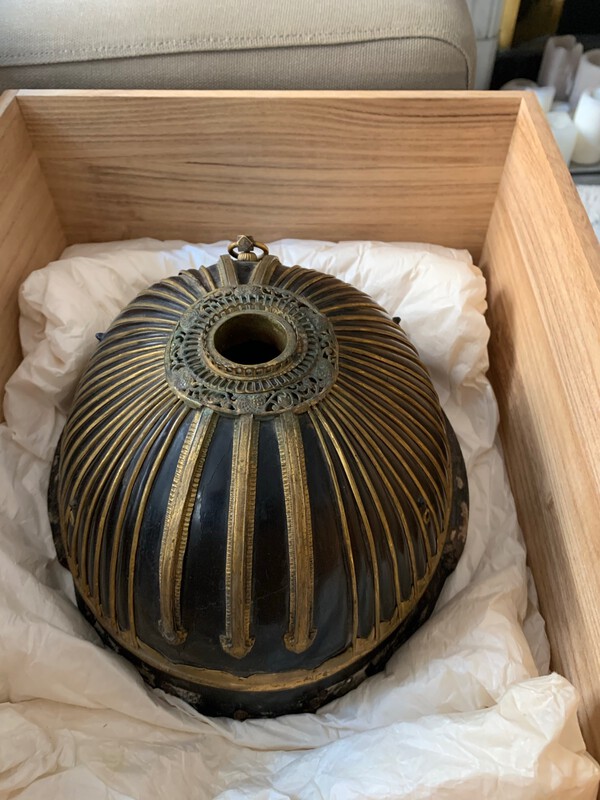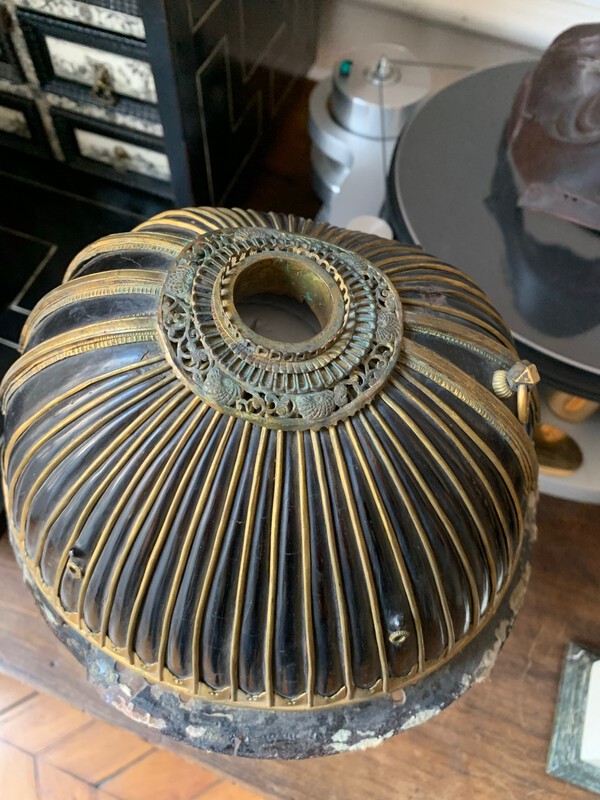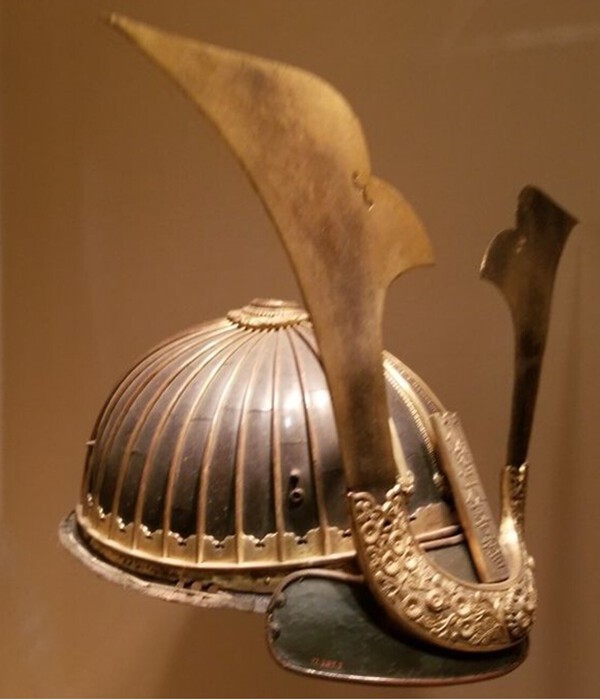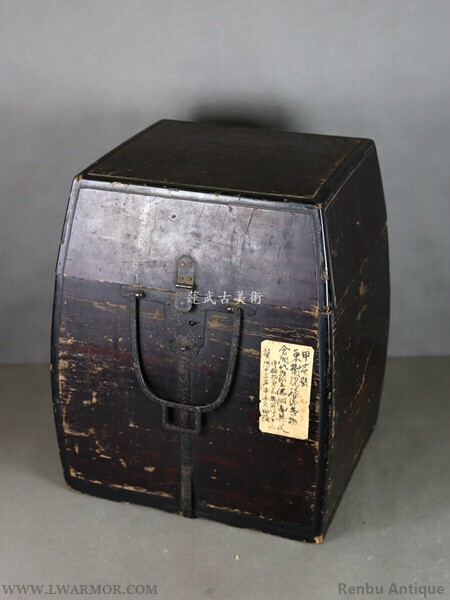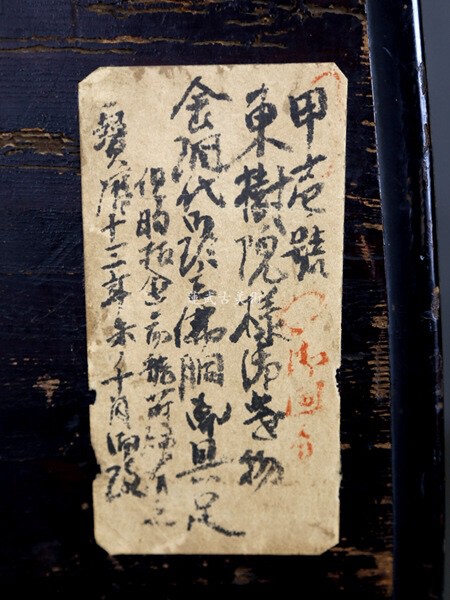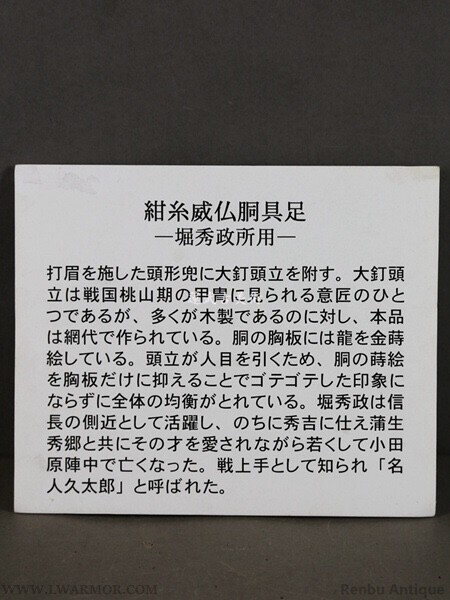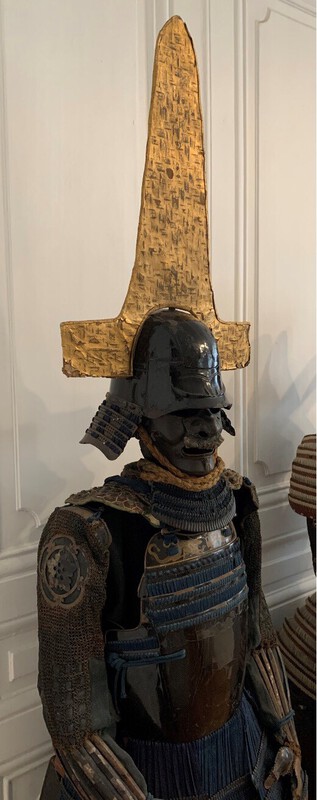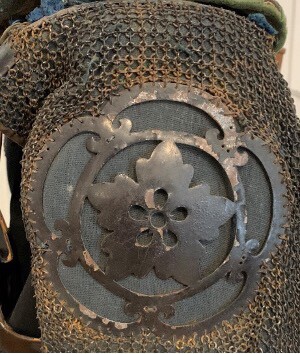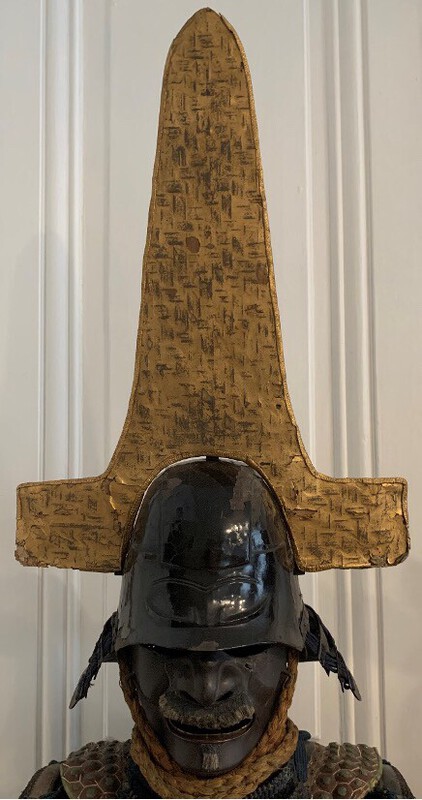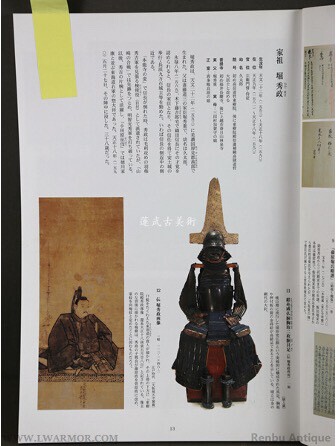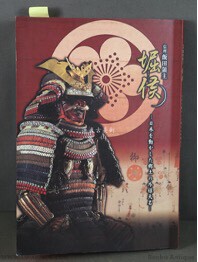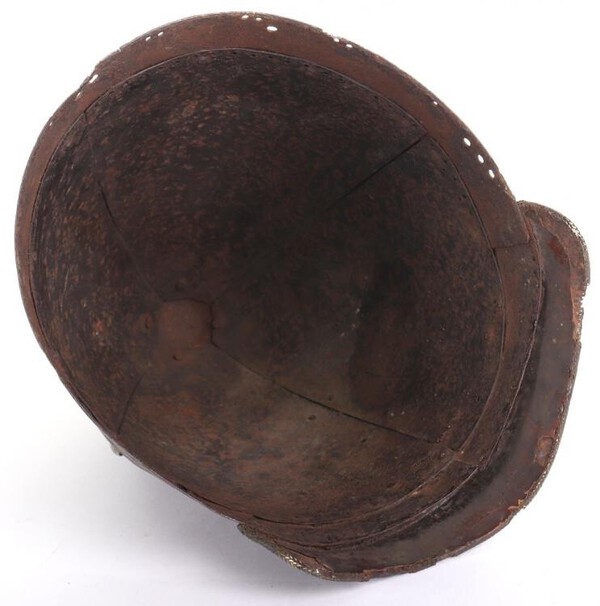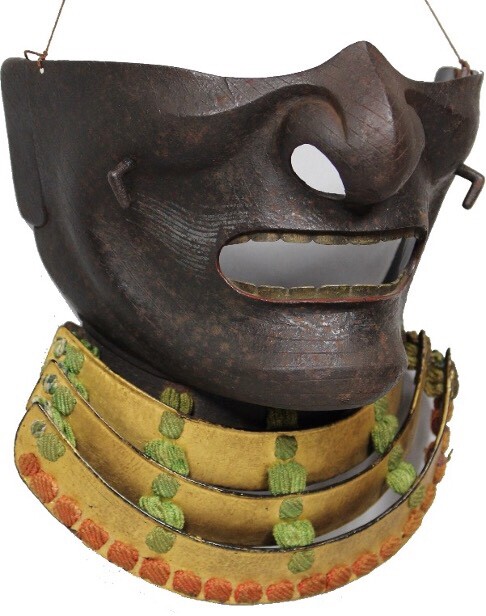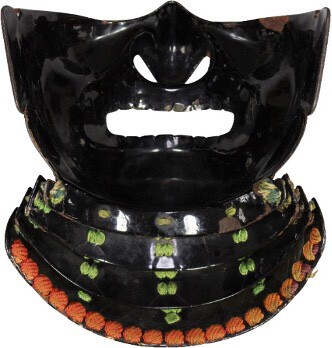-
Posts
28 -
Joined
-
Last visited
Content Type
Profiles
Forums
Events
Store
Downloads
Gallery
Everything posted by Alainalain
-
It's not just Sabbha. on this sale, expertised by PORTIER, i acquired an excellent Kawari (bought from kinokuniya in 2000) with Menpo. but the menpo had a bronze nose!!!! In fact I hadn't seen the lot before the sale and they accepted to refund me for the mask, but less knowledgeable buyers got screwed. These "experts" are really borderline
-
Thank you for your positive feedback. the lacquer is in good condition for its age it is obviously cracked in places but there is no lack except on a shock at the back the lacquer hides a rather approximate assembly of the bachi but the whole is superb, especially the golden copper parts.
-
Nanbokucho period - early Muromachi, 14th century (early 15th ?) Dimensions of the bowl (excluding koshimaki) H9, L20 x L18.5 cm, tehen diameter 3cm Helmet with a slightly zenshozan shape (higher shape on the front than on the back) made of forty-two black lacquered slats with golden copper fukurin on all the suji (slats) and higaki à la base. Three gilded copper shinodare (arrows) on the front plates and two on the back and a kasajirushi no ka, on the top a large Tehen kanamono with five floors in gilded copper, on the sides are pierced four hibiki-noana and surmounted by four shiten-no-byô. The helmet retains all of its original lacquered surfaces and most of its gilded copper elements. of time. The tehen kanamono (decorative element at the top) and the kasajirushi-tsuke no kan (ring at the back intended to receive a small identification flag) have been reported, the tehen is from the Muromachi period and the probably older suspension ring. The bachi, daienzan-shaped, almost perfectly round and low, with a wide tehen at the top, still bears the characteristics of the bachi of the first periods of the fourteenth century, its shape with a front slightly higher than the rear represents one of the first evolutions towards this will become the akodanari form in the 15th century. It is still in the style produced by armorsmiths from the Kyoto and Nara region around the middle of the 14th century. This helmet bowl is a very rare example of an early stage in the evolution of the kabuto style akodanari (melon shape), the typical shape brought in the 15th and 16th centuries another very early exemplar of Akoda nari is in view at the metropolitan museum New York (Accession Number 17.207.2)
- 4 replies
-
- 14
-

-

-

-

-
Hello I am looking for the name of the blacksmith of this shinobi tanto (oei?) the mei is cut Can you help me? thank you in advance
-
Sorry for my late response. Indeed there is an old attribution on the bitsu (but which I cannot translate) if you can help me. Also attached is the text that accompanied the armor during the exhibition (I know how to translate)
-
https://www.ii-museum.jp/26
-
Thanks Geraint, the owner of this armor commanded a corps of arquebusiers, most of the time he had to fight on foot. It is very possible that this armor did not have sode and that suneate and menpo were not worn on the battlefield. Mobility was essential as well as the need to be easily visible to his troops (the very large nail-shaped kashiradate) and the ability to give orders in the noise and smoke of firearms. obviously this is only an opinion.
-
-
Francis, i sent you a message
-
Hello, I share with you an interesting historical armor from my collection, this object belonged to HORI HIDEMASA a Daimyo of the momoyama era. This armor is from the early Momoyama period (around 1575), probably donated by Nobunaga. Indeed on the "Kote" is found the Mon of Oda and an impressive Kashiradate in the shape of a nail which is a reminder of the Mon of HORI (Mon in the shape of a nail puller): The armor dates from the period when Hidemasa was in campaign in the service of ODA Nobunaga between 1572 and 1582. Mon from HORI clan : In 1566 at the age of 13 he entered as a page in the service of Oda Nobunaga, in 1572 he was present during the campaign against the Azai and the Asakura (The Chronicle of Lord Nobunaga / by Ota Gyuichi; translated and edited by JSA Elisonas and JP Lamers). In 1575, he took part in Nobunaga's assaults against the Ikkō-ikki of Echizen province and fought the saika-ikki two years later, commanding Nobunaga's army in the company of Hashiba Hideyoshi and Sakuma Nobumori. He is also at the head of a corps of arquebusiers in several battles including that of Komaki and Nagakute which opposed him to TOKUGAWA IYEASU. On the death of Nobunaga he became one of the closest Daimyo to HIDEYOSHI until his death in 1590 at the siege of ODAWARA Castle, he participated in many campaigns with this armor. Détails from front and behind the Do : This armor comes from the collections of the LII ARMOR Museum in Kyoto and exhibited at the LIDA City Museum during a retrospective on the HORI family : The original bitsu :
- 15 replies
-
- 14
-

-

-

-

-
Hello Uwe, i have found what could be a connexion : A source which attributes this kind of menpo to the iwai school in the book of Robert BURAWOY (p 141 Armurier du Japon étude du Meikô zoukant) a drawing is represented in the Meikô zukan, it presents these which "would" be the characteristics of this school: ressei, the non-detachable nose (in earlier versions), the yasurime.
-
there is another menpo which has the same file strokes on the teeth as it is presented in the book Samurai: The Flowering of Japan by Andrew Mancabelli (sorry for the photo I have no better)
-
Yes the tehen and the interior without shikoro and ukebari at the base of the original Korean bowl (above the shikoro) there are multiple openings originally intended to secure a neck protection
-
-
-
Thank you Uwe I am very interested, having no other sources than the net concerning the Mon
-
Thank you Luc, The ressei menpo, from momoyama / early Edo period is made of natural iron with yasurime, mustache and beard in silver lacquer and non-removable nose typical of the early Iwai school, maybe by Iwai Yozaemon imself ,the Tokugawa Ieyasu armourer, (we can dream .). An amazing feature of this menpo (which I haven't, yet, found on others) is that it doesn't have a sweat-draining hole under the chin, probably it was more intended for presenting an armor than intended for use in the field.
-
Hello, Uwe, Curran, Sorry the term "timbre" is not the correct one (translation problem) in French the word "timbre" can also be used to refer to the helmet "boshi". there is no mark on the Kabuto. About the attribution of Mon to the IKEDA clan of Settsu province: I found information and the representation of Mon from Settsu-IKEDA on the following link: https://en.wikipedia.org/wiki/Ikeda_clan I did the same google searches on Japanese sites using the Settsu IKEDA kanji (摂 津 池田 氏) and found the same results: http://www2.harimaya.com/sengoku/html/s_iked_k.html I find that my are very similar to that of the kabuto, but obviously this is only a guess. On the Korean origin of the helmet: I found two arguments in favor of this hypothesis: - The boshi comes from "RUNJEET SINGH" a British antique dealer from Asia who attributed to it a Korean origin. - It is very similar to Korean helmets from the same period, like the one that belonged to Ryu Seong-ryong, the mounting of the helmet is very similar; a four piece bowl of russet iron, joined vertically by means of riveted winged straps with a median ridge, a method that can be found on many north Asian helmets of Mongol form. Finally, the presence of samurai from the IKEDA clan under the command of IKEDA Hideuji (池 田秀氏), one of the 6 generals of the right-wing army during the second invasion of Korea (1597-98) is confirmed. in two books that of Stéphane TURNBULL (Samurai Invasion Japan Korean War 1592-1598, p240) and that of Georges Sansom (A History of Japan, 1334-1615. Stanford University Press. P. 353), these books are available, in part , under google book and a search can be done using the name "IKEDA Hideuji" under google book. there is a Nanban helmet which is completely identical to this one (except the parts reassembled in Japan). This named Kabuto having belonged to TORII Motodata is exhibited at the Seichu shrine which honors Mototada in Mibu-cho, Tochigi prefecture. This is what I was able to find in my research.
-
I share with you another kabuto from my collection, it is a Korean helmet dating back to the momoyama era, I also send you the state of my research on this Kabuto, do not hesitate to correct or complete : The helmet consists of 4 plates by 4 metal bands riveted with 32 rivets, a mount found on many North Asian Mongolian-shaped helmets. Inside the base of the original Korean stamp there are multiple openings originally intended to secure a neck protection. The bowl is topped with a tehen no kanamono at the top reported during reassembly, as is the koshi-maki and the tsunomoto. The mabizashi which replaces the original visor is bordered with a braided edging of silver copper wire (I have not found this type of decoration on any other kabuto ?). the openwork iron mon in the shape of a golden melon flower (shiho-mokko) is applied to the mabizashi. Mon used by the IKEDA clan (Settsu-Ikeda branch). The helmet was most certainly brought back from Korea during the Imjin wars (1592-1598), samurai of the IKEDA clan participated in the second invasion under the command of IKEDA Hideuji (池 田秀氏) who was one of the 6 generals (2800 men) of the right wing army under the command of MORI Hidemoto during the second invasion of Korea (1597-98). Stephen Turnbull, Samurai Invasion Japan Korean War 1592-1598, p240). A Joseon kabuto reassembled with an identical helmet that belonged to TORII Mototada (heroic commander of The defense of the castle of Fushimi prelude to the battle of Sekigahara) is kept at the Seichu shrine in Mibu-cho, Tochigi prefecture (Illustrated Sengoku armor collection - definitive edition (2) (Gunzo history series) ISBN: 405603642X (2005) A Korean helmet with a similar stamp that belonged to Ryu Seong-ryong (state councilor)who wore it during the Imjin war (Advanced Center for Korean Studies, Cultural Héritage Administration Trésor n° 460)
-
Thank you for your help uwe.
-
Thank you for this first informations, if you have complementary it will be very nice
-
I share with you an menpo from my collection for which I require your help. it is an unsigned Edo period ressei menpo, very expressive of which I do not know the school. In natural iron, it has a very prominent upper lip (the mustache is missing) the teeth are silver lacquered and it has a wide sweat running hole and a otayori. What is your opinion about the school and the period (early to late Edo?). If you know of other similar menpo? Thank you in advance.



